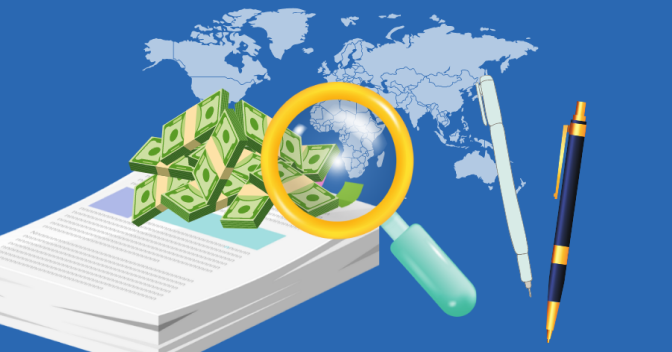Are you curious to know what is producer’s equilibrium? You have come to the right place as I am going to tell you everything about producer’s equilibrium in a very simple explanation. Without further discussion let’s begin to know what is producer’s equilibrium?
In the world of economics, one of the fundamental goals of any business is to maximize profit while minimizing costs. Producer’s equilibrium is a key concept that revolves around this principle. It refers to the point at which a producer achieves the ideal balance between the price of the product and the cost of production, resulting in the highest possible profit. In this blog, we will explore the concept of producer’s equilibrium, its components, and how it influences business decisions.
What Is Producer’s Equilibrium?
Producer’s equilibrium is a concept in microeconomics that helps businesses determine the optimal level of production that maximizes their profits. At this equilibrium point, the producer aims to produce and sell a quantity of goods or services that ensures the highest possible profit. In simpler terms, it’s the point where a producer reaches a balance between revenue and cost, leading to an optimal level of output.
Key Components Of Producer’s Equilibrium
To understand producer’s equilibrium better, let’s break it down into its essential components:
- Total Revenue (TR): Total revenue is the total income a producer generates by selling a certain quantity of goods or services at a given price. TR is calculated as TR = Price (P) x Quantity (Q). The producer’s goal is to maximize total revenue.
- Total Cost (TC): Total cost represents all the expenses incurred in the production process, including fixed costs (e.g., rent, salaries) and variable costs (e.g., raw materials, labor). TC can be divided into two categories:
- Fixed Costs (FC): These costs remain constant, regardless of the level of production.
- Variable Costs (VC): These costs vary with the level of production. As production increases, variable costs also increase.
- Profit (π): Profit is the difference between total revenue and total cost. It is the ultimate goal of every producer. Profit is calculated as π = TR – TC.
Mathematical Representation Of Producer’s Equilibrium
The objective of producer’s equilibrium is to maximize profit. This can be mathematically represented as:
Maximize π = TR – TC
To determine the producer’s equilibrium, you must consider the following conditions:
- Marginal Cost (MC) and Marginal Revenue (MR): At the point of equilibrium, the producer aims to produce the quantity of goods where the marginal cost (MC) is equal to the marginal revenue (MR). This is because, at this point, any further increase in production would result in higher costs than revenue.
MC = MR
- Price (P) and Average Cost (AC): The price at which the goods are sold should be greater than or equal to the average cost of production (AC). If the price is lower than the average cost, the producer would incur losses.
P ≥ AC
How Producer’s Equilibrium Influences Business Decisions?
Producer’s equilibrium is a crucial concept for businesses in making informed decisions. Here are some key takeaways:
- Optimal Production Levels: Businesses can use the concept of producer’s equilibrium to determine the ideal quantity of goods to produce. This helps in maximizing profit while minimizing costs.
- Pricing Strategies: Understanding the equilibrium price (where P ≥ AC) allows businesses to set competitive prices that cover production costs and provide a reasonable profit margin.
- Resource Allocation: It aids in efficient allocation of resources by ensuring that production is neither underutilizing nor overusing resources, thus minimizing waste.
- Long-Term Planning: Producer’s equilibrium is essential for long-term planning, helping businesses maintain profitability over extended periods.
Conclusion
Producer’s equilibrium is a critical concept that lies at the heart of economic decision-making for producers. It involves finding the right balance between price, revenue, and costs to maximize profits. By understanding this equilibrium, businesses can make informed decisions, set competitive prices, and allocate resources efficiently, ultimately contributing to their success and sustainability in the market.
FAQ
What Is The Producer’s Equilibrium In Economics?
Producer’s equilibrium refers to a situation where profits are maximised, i.e., the difference between total revenue and total cost is maximised, or in cases losses, the difference is minimised, so as to minimise losses. Was this answer helpful?
What Is The Producer’s Equilibrium Class 11 Notes?
When MC equals MR, the producer is in equilibrium. This condition ensures that the producer is maximizing their profits by producing the optimal quantity of goods or services. If MC is less than MR, the producer should increase production, and if MC is greater than MR, the producer should decrease production.
What Is The Meaning Of Consumer’s And Producer’s Equilibrium?
A consumer’s equilibrium refers to the point where he or she derives maximum satisfaction by spending money on the consumption of goods and services. Producer’s equilibrium refers to that price and output combination which brings maximum profit to the producer and profit declines as more is produced.
What Is Producer Equilibrium Pdf?
The combination of inputs is optimum if the given quantity of output can be produced with minimum cost or if the maximum quantity of output can be produced with a given cost of production. This decision of the producers is called as “Producer’s Equilibrium”.
I Have Covered All The Following Queries And Topics In The Above Article
What Is Producer Equilibrium With Diagram
What Is Producer’s Equilibrium With Example
What Is Producer’s Equilibrium Pdf
What Is Producer’s Equilibrium In Economics
What Is Producer’s Equilibrium Formula
What Is Producer’s Equilibrium Class 12
What Is Producer’s Equilibrium Class 11
Producer’s Equilibrium Notes
What Is Producer’s Equilibrium
What is the producer’s equilibrium in economics



